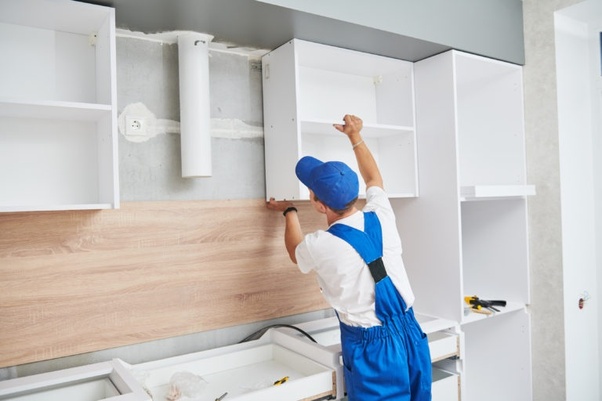
How to Install Kitchen Cabinets Without Studs: A Comprehensive Guide
Installing kitchen cabinets without studs may seem like a daunting task, but with the right guidance and know-how, it’s a project that can be successfully accomplished. Whether you’re looking to save on cost to install kitchen cabinets or you’re dealing with unconventional wall structures, this guide will provide you with the information you need to get the job done.
In this comprehensive article, we’ll cover a wide range of topics related to installing kitchen cabinets without studs, including cost to install kitchen cabinets, kitchen drawing easy, how to hang upper cabinets by yourself, cabinets that sit on counter, blocking for cabinets, how to hang cabinet doors, installing drawers in cabinets, and whether you should start with flooring or cabinets first. Let’s dive in!
Cost to Install Kitchen Cabinets
When embarking on a kitchen cabinet installation project, understanding the cost to install kitchen cabinets involved is crucial. The cost to install kitchen cabinets without studs can vary widely depending on factors such as the quality of the cabinets, labor costs, and additional materials required. On average, you can expect to spend between $2,000 and $6,000 for a standard kitchen cabinet installation.
Kitchen Drawing Made Easy
Before you start the installation process, it’s essential to have a clear plan. Creating a kitchen drawing easy can simplify the installation. Sketch out your kitchen layout, marking where each cabinet will go. This drawing will serve as your roadmap throughout the installation.
How to Hang Upper Cabinets by Yourself
Hanging upper cabinets on your own can be challenging, but it’s not impossible. Here are some steps to follow:
- Gather the Right Tools: Ensure you have a sturdy ladder, a level, cabinet screws, and a drill.
- Mark Wall Studs: Use a stud finder to locate any available wall studs. While you may not have studs for every cabinet, securing some to them will add stability.
- Use Wall Anchors: For cabinets without studs, wall anchors are your best friend. They provide extra support and ensure your cabinets stay securely in place.
- Measure and Level: Take your time to measure and level each cabinet. This step is crucial for a uniform and aesthetically pleasing installation.
- Secure Cabinets: Carefully attach each cabinet to the wall, making sure they are level and aligned correctly.
Cabinets That Sit on Counter
Some kitchen cabinets are designed to sit directly on the countertop, eliminating the need for wall studs. These cabinets are a viable option when studs are scarce or inaccessible. They provide stability by resting on the counter, making installation more straightforward.
Blocking for Cabinets
Blocking for cabinets refers to adding additional support between wall studs to provide a secure anchor for cabinets. This is a common technique used when wall studs are not evenly spaced or if there are gaps in the wall structure. It involves adding pieces of lumber between the studs at the height where the cabinets will be installed.
How to Hang Cabinet Doors
Once your cabinets are securely installed, it’s time to hang the cabinet doors. Follow these steps for a successful cabinet door installation:
- Hinge Placement: Determine the ideal placement for your cabinet door hinges. Ensure they are aligned correctly for a smooth open and close.
- Drilling Holes: Use a drill to create holes for the hinges on both the door and the cabinet frame.
- Attach Hinges: Securely attach the hinges to both the door and the cabinet frame.
- Test and Adjust: Before finalizing the installation, test the doors to ensure they open and close smoothly. Make any necessary adjustments.
Installing Drawers in Cabinets
Adding drawers to your cabinets can enhance functionality and organization in your kitchen. Here’s how to install drawers in your cabinets:
- Measure and Plan: Measure the cabinet interior and plan the size and number of drawers you want to install.
- Drawer Slides: Install drawer slides according to the manufacturer’s instructions.
- Assemble Drawers: Assemble the drawers, ensuring they fit snugly within the slides.
- Secure Drawers: Carefully slide the drawers into place and secure them to the slides.
Flooring or Cabinets First?
One common dilemma when remodeling a kitchen is deciding whether to install the flooring or cabinets first. The general rule of thumb is to install the cabinets first. This ensures that they are level and properly anchored to the wall. Flooring can then be installed around the cabinets for a seamless look.
Frequently Asked Questions (FAQs)
Can I install kitchen cabinets without studs?
Yes, you can install kitchen cabinets without studs by using wall anchors and blocking for cabinets techniques for added stability.
What is the cost of installing kitchen cabinets without studs?
The cost of installing kitchen cabinets without studs can range from $2,000 to $6,000, depending on various factors.
Do I need professional help to install kitchen cabinets without studs?
While it’s possible to install kitchen cabinets without studs without professional help, it can be challenging. If you’re not experienced with DIY projects, consider hiring a professional for a smoother installation.
Can I hang upper cabinets by myself?
Yes, you can hang upper cabinets by yourself with the right tools and techniques. Wall anchors and careful measurements are key.
Should I install cabinets or flooring first?
It’s recommended to install cabinets before flooring to ensure a level and secure foundation for your cabinets.
What tools do I need for cabinet installation?
You’ll need tools such as a stud finder, a level, a drill, cabinet screws, wall anchors, and a sturdy ladder.
Conclusion
Installing kitchen cabinets without studs is a feasible project that can save you money and provide a unique solution for your kitchen. By following the steps outlined in this guide, you can tackle this project with confidence. Remember to plan carefully, use the right tools, and consider professional help if needed. With patience and precision, you can achieve a beautiful and functional kitchen.